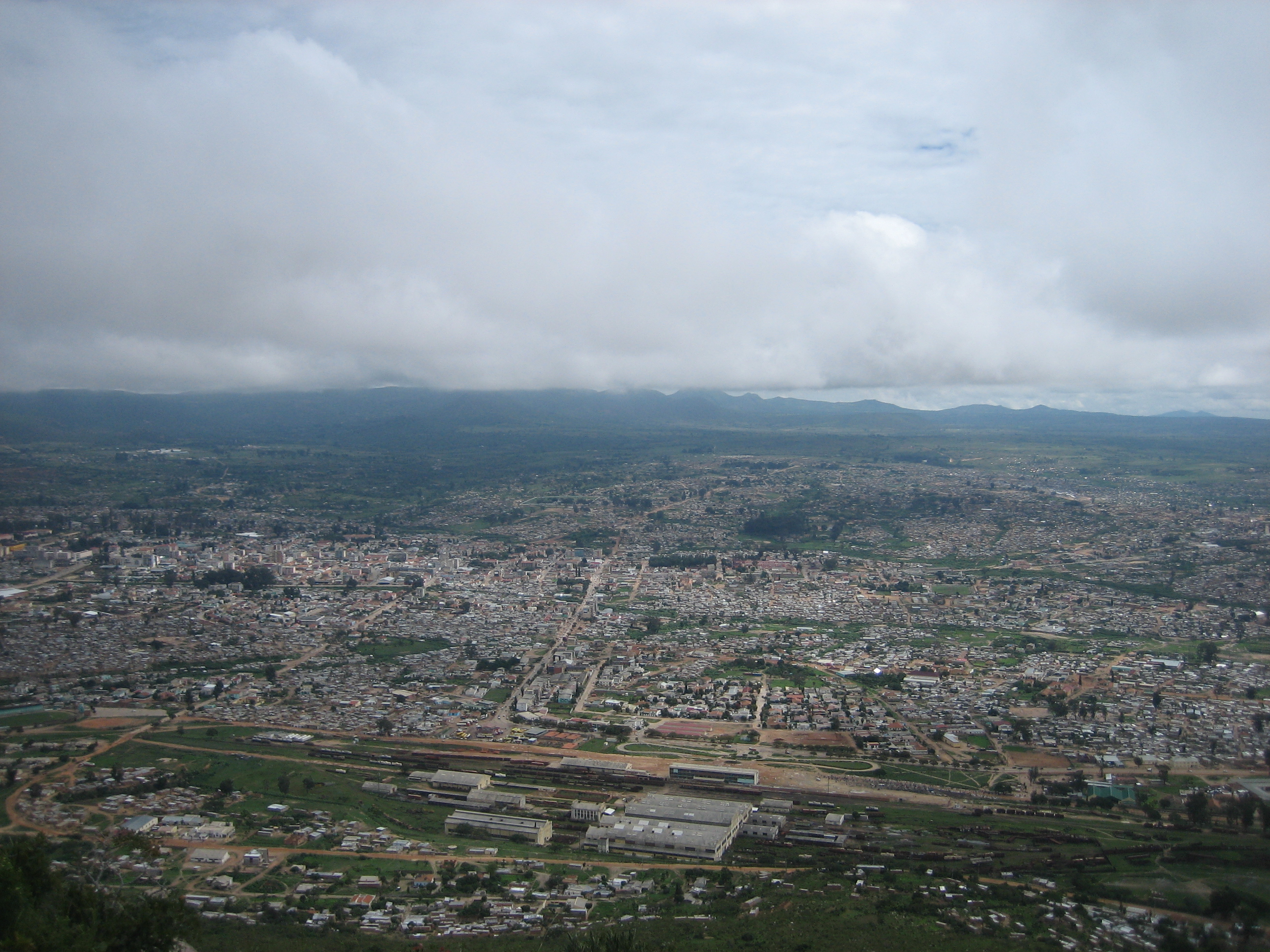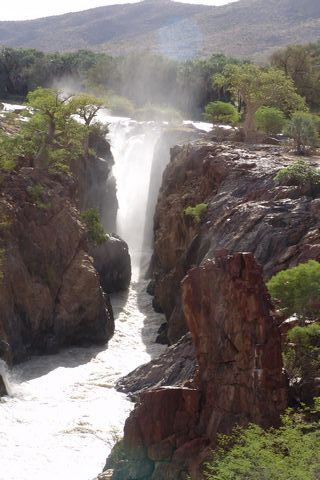|
Matala, Angola
Matala is a town and a Municipalities of Angola, municipality in the province of Huíla Province, Huíla, Angola. The municipality had a population of 262,763 in 2014. Matala is situated along the Kunene River at an elevation of approximately 1300 metres above sea level; the Matala Weir is positioned at this point along the river.C.Michael Hogan. 2012''Kunene River''. eds. P.Saundry & C.Cleveland. Encyclopedia of Earth. National Council for Science and the Environment. Washington DC./ref> Transport It lies on the Moçâmedes Railway, southern line of Transport in Angola, Angolan Railways. See also * Railway stations in Angola References Populated places in Huíla Province Municipalities of Angola {{Angola-geo-stub ... [...More Info...] [...Related Items...] OR: [Wikipedia] [Google] [Baidu] |
Municipalities Of Angola
A municipality is usually a single administrative division having corporate status and powers of self-government or jurisdiction as granted by national and regional laws to which it is subordinate. The term ''municipality'' may also mean the governing body of a given municipality. A municipality is a general-purpose administrative subdivision, as opposed to a special-purpose district. The term is derived from French and Latin . The English word ''municipality'' derives from the Latin social contract (derived from a word meaning "duty holders"), referring to the Latin communities that supplied Rome with troops in exchange for their own incorporation into the Roman state (granting Roman citizenship to the inhabitants) while permitting the communities to retain their own local governments (a limited autonomy). A municipality can be any political jurisdiction, from a sovereign state such as the Principality of Monaco, to a small village such as West Hampton Dunes, New York. The ... [...More Info...] [...Related Items...] OR: [Wikipedia] [Google] [Baidu] |
Provinces Of Angola
Angola is divided into eighteen provinces, known in Portuguese language, Portuguese as ''províncias'': See also *List of provinces of Angola by Human Development Index *Municipalities of Angola * Communes of Angola * ISO 3166-2:AO, the ISO codes for Angola. References Bibliography * {{Authority control Provinces of Angola, Subdivisions of Angola Lists of administrative divisions, Angola, Provinces Administrative divisions in Africa, Angola 1 First-level administrative divisions by country, Provinces, Angola Angola geography-related lists ... [...More Info...] [...Related Items...] OR: [Wikipedia] [Google] [Baidu] |
Huíla Province
Huíla is a province of Angola. It has an area of and a population of 2,497,422 (2014 census). Lubango is the capital of the province. Basket-making is a significant industry in the province; many make baskets out of reeds. History From the Portuguese Colonial War (1961–1975) to Angola's independence, and the subsequent civil war in Angola (1975-2002) Huíla was directly affected only during relatively short periods of time. Cassinga was abandoned by its European supervisors, and the mine fell into neglect during the ensuing Angolan Civil War. The following year it was occupied by the People's Liberation Army of Namibia (PLAN), military wing of the South West African People's Organization. PLAN subsequently adopted Cassinga as a staging point for insurgent raids on South-West Africa, about 250 kilometres to the south. Their bases soon became a sanctuary for local refugees during the Namibian War of Independence. In 1978, PLAN's presence in Cassinga attracted the attention of ... [...More Info...] [...Related Items...] OR: [Wikipedia] [Google] [Baidu] |
West Africa Time
West Africa Time, or WAT, is a time zone used in west-central Africa. West Africa Time is one hour ahead of Coordinated Universal Time ( UTC+01:00), which aligns it with Central European Time (CET) during winter, and Western European Summer Time (WEST) / British Summer Time (BST) during summer. As most of this time zone is in the tropical region, there is little change in day length throughout the year and therefore daylight saving time is not observed. West Africa Time is the time zone for the following countries: * (as Central European Time) * * * * * * (western side only) * * * (as Central European Time) * * * * (as Central European Time) * Countries west of Benin (except Morocco and Western Sahara) are in the UTC±0 time zone. Civil time in most of those countries is defined with reference to Greenwich Mean Time (now an alias for UTC±0, rather than an independent reference). References See also * Central European Time, an equivalent time zone covering most E ... [...More Info...] [...Related Items...] OR: [Wikipedia] [Google] [Baidu] |
Köppen Climate Classification
The Köppen climate classification is one of the most widely used climate classification systems. It was first published by German-Russian climatologist Wladimir Köppen (1846–1940) in 1884, with several later modifications by Köppen, notably in 1918 and 1936. Later, the climatologist Rudolf Geiger (1894–1981) introduced some changes to the classification system, which is thus sometimes called the Köppen–Geiger climate classification system. The Köppen climate classification divides climates into five main climate groups, with each group being divided based on seasonal precipitation and temperature patterns. The five main groups are ''A'' (tropical), ''B'' (arid), ''C'' (temperate), ''D'' (continental), and ''E'' (polar). Each group and subgroup is represented by a letter. All climates are assigned a main group (the first letter). All climates except for those in the ''E'' group are assigned a seasonal precipitation subgroup (the second letter). For example, ''Af'' indi ... [...More Info...] [...Related Items...] OR: [Wikipedia] [Google] [Baidu] |
Humid Subtropical Climate
A humid subtropical climate is a zone of climate characterized by hot and humid summers, and cool to mild winters. These climates normally lie on the southeast side of all continents (except Antarctica), generally between latitudes 25° and 40° and are located poleward from adjacent tropical climates. It is also known as warm temperate climate in some climate classifications. Under the Köppen climate classification, ''Cfa'' and ''Cwa'' climates are either described as humid subtropical climates or warm temperate climates. This climate features mean temperature in the coldest month between (or ) and and mean temperature in the warmest month or higher. However, while some climatologists have opted to describe this climate type as a "humid subtropical climate", Köppen himself never used this term. The humid subtropical climate classification was officially created under the Trewartha climate classification. In this classification, climates are termed humid subtropical when the ... [...More Info...] [...Related Items...] OR: [Wikipedia] [Google] [Baidu] |
Angola
, national_anthem = " Angola Avante"() , image_map = , map_caption = , capital = Luanda , religion = , religion_year = 2020 , religion_ref = , coordinates = , largest_city = capital , official_languages = Portuguese , languages2_type = National languages , languages2 = , ethnic_groups = , ethnic_groups_ref = , ethnic_groups_year = 2000 , demonym = , government_type = Unitary dominant-party presidential republic , leader_title1 = President , leader_name1 = João Lourenço , leader_title2 = Vice President , leader_name2 = Esperança da CostaInvestidura do Pr ... [...More Info...] [...Related Items...] OR: [Wikipedia] [Google] [Baidu] |
Kunene River
The Cunene (Portuguese spelling) or Kunene (common Namibian spelling) is a river in Southern Africa. It flows from the Angola highlands south to the border with Namibia. It then flows west along the border until it reaches the Atlantic Ocean. It is one of the few perennial rivers in the region. It is about long, with a drainage basin in area. Its mean annual discharge is 174 m3/s (6,145 cfs) at its mouth. The Epupa Falls lie on the river. Olushandja Dam dams a tributary of the river, the Etaka, and helps provide the Ruacana Power Station with water. Dam controversies The Namibian government proposed in the late 1990s to build the Epupa Dam, a controversial hydroelectric dam on the Cunene. In 2012 the Governments of Namibia and Angola announced plans to jointly build the Orokawe dam in the Baynes Mountains. According to the indigenous Himba who would have been most affected by the construction of the dam, the dam threatens the local ecosystem and therefore the economic bas ... [...More Info...] [...Related Items...] OR: [Wikipedia] [Google] [Baidu] |
Moçâmedes Railway
The Moçâmedes Railway ( pt, Caminho de Ferro de Moçâmedes (CFM)) is an 860 km railway line in Angola, between Moçâmedes and Menongue. The line is operated by the company Caminhos de Ferro de Moçâmedes E.P. The port city of Moçâmedes was renamed Namibe between 1985 and 2016, so the railway was sometimes called the ''Namibe Railway'' ( pt, Caminho de Ferro do Namibe). However, the railway company retained its original legal name. Its cargo flow point is made through the port of Namibe. History Construction began on the railway in 1905, when Angola was a Portuguese colony. The railway was opened to traffic in 1910, and continued to be extended inland until it reached its current terminus at Menongue (formerly Serpa Pinto) in December 1961. The line was originally built with narrow gauge track, but it was re-gauged to Cape gauge in 1950, matching the gauge of other lines in Angola and southern Africa. After Angola obtained its independence from Portugal in 1975, th ... [...More Info...] [...Related Items...] OR: [Wikipedia] [Google] [Baidu] |
Transport In Angola
Transport in Angola comprises: Roads Walking home.jpg, Walking home on EN 105. Tired are they.jpg, Donkey-drawn carts. Transportation Jingu.jpg, Three-wheeled motorcycles. The riches transportation.jpg, Trucks. Midd Town Luanda.jpg, Automobiles in Luanda. The Nowhere road.jpg, New highway (2019). Railways There are three separate railway lines in Angola: * Luanda Railway (CFL) (northern) * Benguela Railway ( CFB) (central) * Moçâmedes Railway ( CFM) (southern) Reconstruction of these three lines began in 2005 and they are now all operational. The Benguela Railway connects to the Democratic Republic of the Congo. Waterways * 1,300 km navigable (2008) :''country comparison to the world:'' 36 Pipelines * gas, 2 km; crude oil 87 km (2008) In April 2012, the Zambian Development Agency (ZDA) and an Angolan company signed a memorandum of understanding (MoU) to build a multi-product pipeline from Lobito to Lusaka, Zambia, to deliver various refined produ ... [...More Info...] [...Related Items...] OR: [Wikipedia] [Google] [Baidu] |
Railway Stations In Angola
Railway stations in Angola include: Towns served by rail North line (Luanda Railway) (CFL) (Also known as ''Luanda Railway'') (originally 1000 mm gauge, now 1067 mm gauge) * Luanda – port – national capital; junction ** Bungo (0 km) Start of Duplication. ** Caxito – branch terminus; provincial capital ** Quicabo * Funda ** Cabiri – branch terminus * Sambizanga * Rangel * Cazenga – workshops * Viana (23 km) – suburban station; stadium ** (junction) ** Baía Farta branch terminus; end of duplication * Camizunzo * Catete * Zenza do Itombe – junction ** Dondo – branch terminus ** Quixinge – branch extension * Beira Alta (Angola, Cuanza Norte) * Canhoca – junction ** Cambondo – branch terminus * N'dalatando * Cacuso * Lombe * Malanje (479 km) – terminus * Golungo Alto – branch terminus ---- * Musseques – first passenger halt from port * Filda * Grafanil * Estagem * Comarca * Viana * Pomagol ---- * Bungo * T ... [...More Info...] [...Related Items...] OR: [Wikipedia] [Google] [Baidu] |
Populated Places In Huíla Province
Population typically refers to the number of people in a single area, whether it be a city or town, region, country, continent, or the world. Governments typically quantify the size of the resident population within their jurisdiction using a census, a process of collecting, analysing, compiling, and publishing data regarding a population. Perspectives of various disciplines Social sciences In sociology and population geography, population refers to a group of human beings with some predefined criterion in common, such as location, race, ethnicity, nationality, or religion. Demography is a social science which entails the statistical study of populations. Ecology In ecology, a population is a group of organisms of the same species who inhabit the same particular geographical area and are capable of interbreeding. The area of a sexual population is the area where inter-breeding is possible between any pair within the area and more probable than cross-breeding with ind ... [...More Info...] [...Related Items...] OR: [Wikipedia] [Google] [Baidu] |




